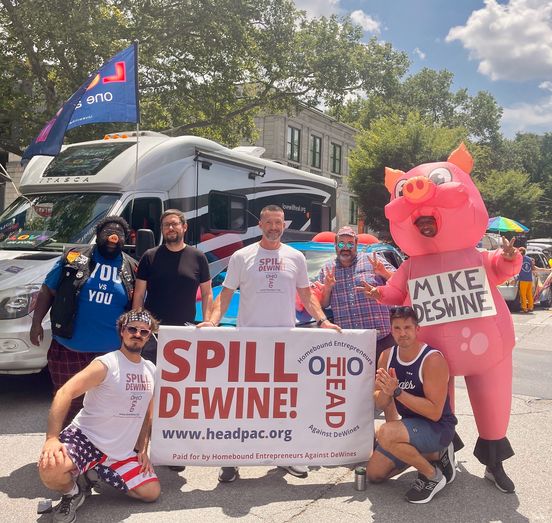In this third installment, I intend to come to a close with commentary on the East Palestine train derailment and put it in context with some of the larger issues American society is dealing with today. It is not without a sense of irony that I chose the title for this three-part series. Train Wreck is an apt description for many different industries and institutions in our country.
By way of review of the East Palestine incident, let me first state what I think can reasonably be considered as facts. First of all, there seems to be no dispute that the original derailment was caused by a broken axle or wheel bearing failure as evidenced from fire seen from video footage recorded by a doorbell camera on a home about a mile and a half ahead of the derailment. Secondly, some expert opinion suggests that the hazardous material clean up could have been handled differently, and better. Third, this is no time to be complacent about railroad safety in general. Statistically, it is not getting better. Among other things, the number of derailments is unacceptably high.
The problems in the US railroad industry are not confined to safety. To most people, US railroads seem stuck in the past. The rest of the world seems to have no problem providing high speed passenger rail service. While other nations are getting more service from its railroads, we are getting less. As stated in the previous columns, American railroads are eliminating track, not building more except in extremely rare instances.
The railroad industry is not alone.
The American steamship industry is an industry that has suffered a permanent decline from 50 years ago. There are less than 200 U.S. flag merchant ships out of the roughly 40,000 that serve the U.S. every year. Most of these are operation within U.S. territory. The shipyards that build merchant ships are all in other countries. Some of these problems are self-inflicted. Our maritime law has been outdated for generations, but Congress has been unable to act.
While the safety record of regulated passenger airlines has not deteriorated, there are signs of cracks in the foundation of our air transport system: flight delays, cancellations, and near misses on runways. The underlying cause appears to be a shortage of pilots and air traffic controllers. The other often overlooked problem is regulatory inefficiency and capture. The FAA has drug its feet on ADS-B, on a Remote Tower Pilot Program that is well advanced in Europe, the NOTAM infrastructure, and reform of the Passenger Facility Charge. The money is available, but it is often awarded to contractors who want to build the old technology which is currently profitable instead of systems that will take us into the future. Many of these programs have been pushed in Congress since the Clinton Presidency.
Our national highway system is straining under the weight of a growing, more mobile population. Most Americans are familiar with stories of bridges collapsing. New, more stringent hours of service regulations have been imposed on truck drivers while rest areas have become overcrowded leaving them with no place to get the required sleep. Even water mains and natural gas pipelines are underbuilt and deteriorating.
There is no question that misallocation of resources is a major factor in this disfunction. The Congressional infrastructure bill was more of the same problem that has occurred for decades. We get less with more. Originally, replacing the Brent Spence bridge over the Ohio River was supposed to cost 1.2 billion dollars. Under the infrastructure bill it came in at 1.7 billion. An extra $5 billion is a lot of money.
Complex systems are fragile. Our transportation system and infrastructure, even our whole economy that is based on purchasing goods manufactured overseas and being delivered to the door, is a very complex system. Once one piece breaks down, the rest quickly falls apart.
Do we have the intellectual capital in this country capable of running these complex systems? I was speaking to some relatives on my wife’s side of the family this week. The oldest daughter, going to be a junior in high school, is getting multiple letters from colleges because of her 4.3 grade point average and high early SAT score. She is also a fantastic athlete, but the rules don’t allow athletic departments to recruit her just yet. She told me, “I don’t read books”. Now, I understand, she and her parents are incredibly busy between attending school and her athletic pursuits, but I had to ask. How do you get such a high-grade point without reading books? The answer, of course, was the internet. It makes me wonder though. Do the teachers still read books, or is all their teaching from the internet or tik-tok?
Do corporations have high standards anymore? Diversity, equity and inclusion, DEI, is not just a talking point on social media. It is real. I have read dozens of annual reports from corporations that have sections devoted to DEI. On the surface, DEI seems aimed at laudable goals, but as an alternative value system to measure corporate success, they fall short. Understandably, merit itself can be subjective. For the college educated entering the work for the first time, who determines what is the right college? Is the grade point average really the best indicator of future success? DEI is even more subjective, and any measurement of DEI doesn’t necessarily correlate to the commercial success of a business. In many corporations DEI has become an end to itself and on that basis, the corporation deserves to fail. Has the movement for DEI gone too far in replacing corporate goals that have real social utility with goals that encourage employees concern with their own self-interest and not the interest of the company which pays their salary? Ultimately, the success of the company is measured by its success with its customers. Have we forgotten how to measure true merit within a company and in society at large? Which approach does a better job encouraging customer satisfaction? How can DEI better perform the function of success than financial measurements of income growth and profitability?
What about greed? Certainly, it’s across all levels of society. Corporations have merged, consolidating industries to the point that no competitive alternatives exist. Greed exists in government, which will soon manifest in a push for increased taxation, but currently is showing itself by the creation of money out of thin air, which is driving costs up across the board, not to mention the entities with their hand out for more and more money, such as universities, defense industries and the medical establishment. The more subsidies they get, the more they raise their prices. Greed manifests itself in government when bills are passed to spend more money on projects than is needed, not just enhance a project beyond simple utility, but to reward friends, donors and families of politicians. Greed manifests itself in corporations when they destroy their competition, and then oppress their customers and employees with high prices and poor service when they have no place left to turn. We have to understand that our country depends on its railroad system for its prosperity and even survival. If it becomes clear that Vanguard and Blackrock are destroying the infrastructure of the railroads they own for short term profit as opposed to long term viability, does the government step in?
I am a minimalist Libertarian. George Washington said, “Government is not reason; it is not eloquence. It is force. And force, like fire, is a dangerous servant and a fearful master.” It is clear from other writings that Washington thought government was necessary, but it also seems abundantly clear that he would prefer the least government possible, and that he would have agreed with Thomas Paine, who wrote, “Government, even in its best state, is but a necessary evil; in its worst state, an intolerable one.”. What is the least government possible? It depends on the citizens. We are at a time when we have to answer a question that America has had to answer numerous times throughout its history. Can we govern ourselves? Let’s hope we will be able to prove that we can, once again. To do so will require the highest level of commitment and competence from its citizens.
John Stewart – At-Large Member, FCLP













